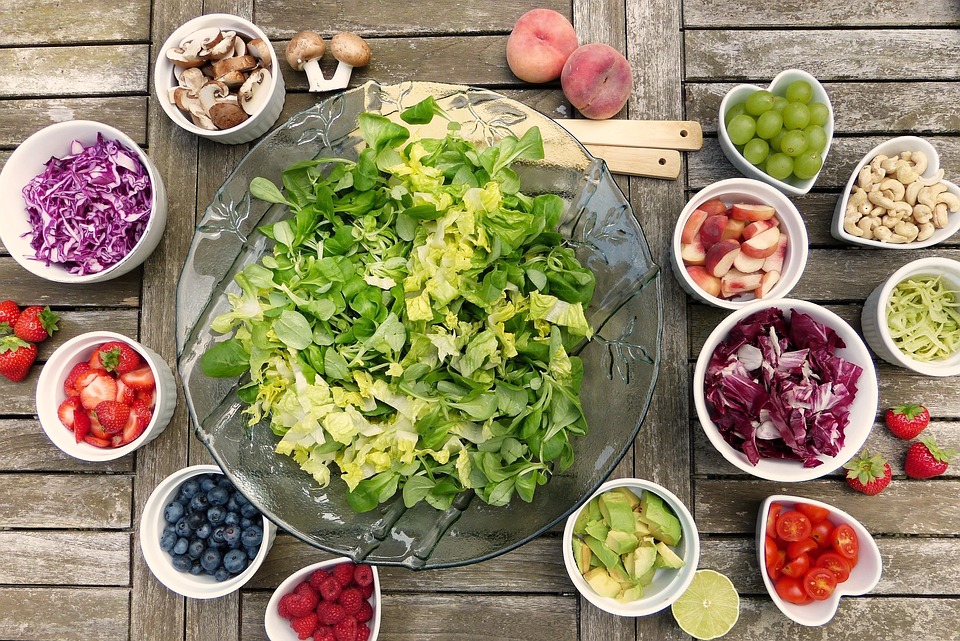To maintain a healthy and active lifestyle, it is important to keep your muscles strong.
According to the revised European consensus on sarcopenia for 2019, published in Aging, after age 50, strength and muscle mass decrease by 1%-2% per year. Two fundamental lifestyle changes can reduce or prevent this age-related loss of muscle, also known as sarcopenia: eating the right foods and doing resistance training.
We look at how resistance training affects our bone and muscle health.
How to Gain Muscle Mass?
Your body’s ability build or maintain muscle is largely influenced by the foods you eat. In order to maintain and build muscle, requires a sufficient amount of dietary protein. In a 2018 study, published in Nutrition, it was found that to gain muscle mass you need to consume about 1.6 grams per kilogram body weight each day. This would be 109 grams per day for someone who weighs 150 pounds (68 kilograms).
It is important to remember that protein is only one component of a healthy diet. A 2019 article in Frontiers in Nutrition suggests that we should focus on a healthy diet in general. Carolyn Williams, Ph.D. RD and registered dietitian agree. Williams says that it doesn’t really matter how much you eat of protein if you don’t get enough calories.
By including complex carbohydrates in your diet every day, along with lean proteins and healthy fats, you will ensure that your body receives the nutrients needed to maintain and grow muscle.
Williams suggests consuming four to five small meals throughout the day, each containing 20 to 30 grams high-quality protein along with complex carbohydrate and healthy fats. Williams says that you need to consume enough carbohydrates and energy. The body will use the energy from the protein that you eat if it is not provided with enough carbohydrates.
The 10 Best Foods for Muscle Building
Avocados
Avocados contain monounsaturated fats and polyunsaturated fats, which are “healthy”.
Avocados are the richest source of protein among all fruits. The minerals magnesium and potassium are excellent for muscle recovery. They are also a good source of the vitamin folic, which according to a review in Archives of Pharmacal Research published in 2019, may positively impact muscle development.
Beans
Beans contain a lot of fiber, vitamins and minerals, and plant based protein. They are also low in fat.
These are a great source of leucine , one of the three essential amino acids that muscles use to provide energy and to grow muscle.
Eggs
You may want to add an egg to your post-workout meal if you’re looking for a perfect dish.
According to a study from 2021 published in , The Journal of Strength and Conditioning Research, researchers found that those who ate an entire egg after a resistance exercise experienced an increased protein synthesis, which may stimulate muscle development.
Fatty Fish
According to a 2020 article in Fronts in Nutrition, tuna, salmon and snapper are excellent sources of Omega-3 fatty acids. This type of polyunsaturated fatty acid has been shown to reduce muscle loss, improve muscle function, and even increase muscle mass.
Are you not a fish fan? Instead, try a fish-oil supplement.
Greek Yogurt
Nonfat Greek yogurt, which is rich in protein and gut healthy probiotics and contains no fat, is a great choice for anyone looking to build or maintain muscle mass and reduce body weight.
In a 2019 study, published in Frontiers in Nutrition, participants who ate plain Greek yogurt with no fat as part of their post-exercise snack showed greater strength and muscle thickness than those who ate a non-protein snack.
Skip the blended yogurts with flavors, however, because they are often loaded with sugar, which would negate any health benefits.
Oatmeal
Whole grains provide complex carbohydrates, which your body requires for energy. Oatmeal contains a balanced mix of carbohydrates, plant protein, fiber, and nutrients.
Remember to avoid flavored oatmeal as they are often loaded with sugar. Instead, opt for plain oatmeal and add dried fruit to boost vitamins and sweetness.
Poultry
Skinless white meat chicken , turkey, and skinless dark-meat poultry are excellent sources of lean proteins, including leucine and other essential amino acids, as well as B vitamins and minerals, which are important components in building and maintaining muscles.
According to a review in Nutrition published in 2022, including poultry as part of a diet rich in vegetables can also help reduce the risk for cardiometabolic disease.
Nuts, seeds and other products
Nuts and seeds contain healthy fats from plants, as well as carbohydrates and protein. The fiber, vitamins and mineral content of nuts and seeds supports many body systems.
Pumpkin seeds have the most health benefits when it comes down to maintaining and preserving muscle mass. According to a 2018 article in the International Journal of Molecular Sciences, pumpkin seeds are rich in leucine and polyunsaturated fatty acids, as well as iron, magnesium, and folate.
Quinoa
Quinoa, like oatmeal is a whole grain that contains complex carbohydrates, plant protein, vitamins, and minerals. Quinoa is one of only a few whole grains to be able to provide dietary complete proteins, meaning that it contains the nine essential amino acid that the body cannot produce.
According to a 2019 article in the International Journal of Food Science, quinoa is rich in antioxidants, magnesium, folate, iron and lysine. This essential amino acid is important for protein synthesis.
Tofu
Soy-based tofu has been a favorite in vegan and vegetarian kitchens for years because of its high nutrient content, antioxidant qualities, and versatility.
Tofu is a protein made from soybeans. It has a similar effect on muscle growth to that of whey. It also offers cardiovascular benefits, which animal-based protein may not.
Soy contains prebiotics, probiotics, and beneficial gut bacteria, as well as isoflavones that promote bone health.
Chocolate Milk
It may surprise you, but chocolate milk is a great addition to any snack.
Williams: “I love milk chocolate!” Compare labels to find brands with less sugar.
The Best Muscle Building Exercises
Resistance training is essential for maintaining and building muscle.
Strength training is a type of resistance training that uses opposing forces to strengthen your muscles. It is also one of the most effective ways to build and maintain lean muscle, which helps to prevent sarcopenia and osteopenia. Strong muscles help to support bones, prevent injury and keep the body moving.
You may find that you can achieve your weight loss goals more easily by , including resistance training. At rest, muscle tissue burns more than fat tissue. By retaining and building more lean mass, you can burn more calories every day even at rest.
Resistance Training: How often and what to do
American College of Sports Medicine recommends resistance training at least twice a week.
Even your own body weight can be used as resistance if you don’t feel comfortable using weights or a gym. Exercises like body-weight squats or wall squats can be done at home without equipment.
The Bottom Line
Exercise and nutrition work together to increase muscle mass.
Research shows that by implementing a healthy diet and exercising at least twice a week with an emphasis on resistance training, you can gain muscle and feel stronger. You will also be able to move more easily and live a healthier lifestyle.


